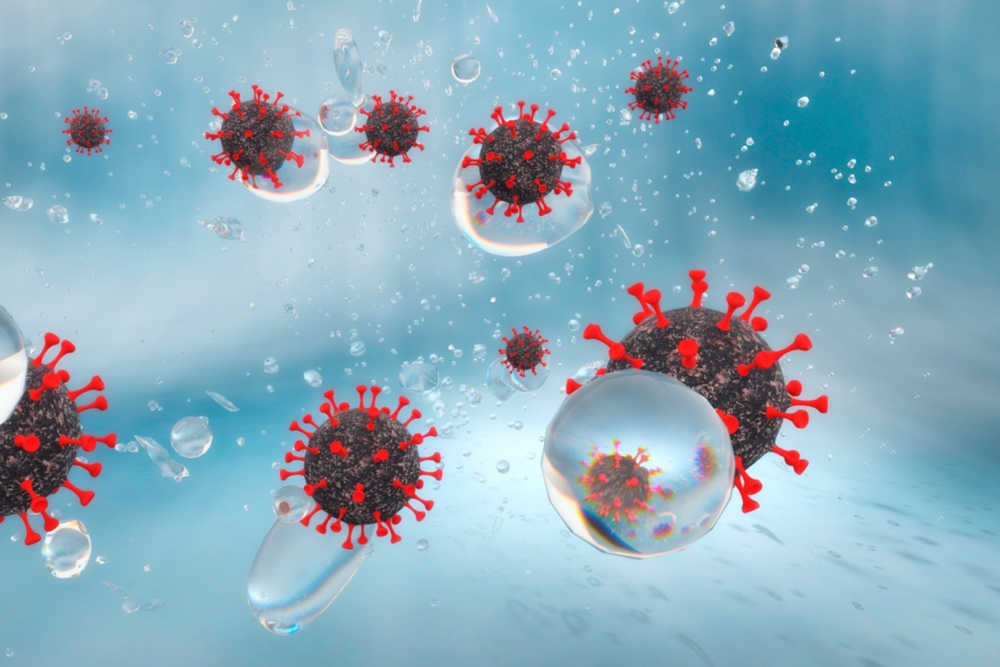Evolution of COVID-19 According to Scientists
As more and more people around the world get vaccinated, the virus is still alive and spreading, making precautions and safety protocols as important as ever.
Since the beginning of the year and the start of the global COVID-19 pandemic, many questions surrounding whether or not the virus had muted and if people could contract it twice emerged. On top of this, many were questioning if the safety protocols truly kept them safe from the virus.
Of course, no safety measures are foolproof, especially if not all the facts are known about the rising cases, its progression and how it can spread. It was initially thought that the coronavirus could only spread through spit particles, whether that be through sharing a kiss, a drink, touching something and then putting your hands in your mouth, speaking to someone too closely, coughing, etc.
However, the Centers for Disease Control and Prevention (CDC) had previously issued via their website in September, a statement explaining that the COVID-19 virus can also spread via airborne transmissions. Since then, they have backtracked and removed this information, now stating that it never should have been posted, being part of an early draft.
In response to this, Jay Butler, the CDC’s deputy director for infectious diseases stated:
“Unfortunately, an early draft of a revision went up without any technical review. We are returning to the earlier version and revisiting that process. It was a failure of process at CDC.”
Since aerosol biologists have been pushing the fact that there is evidence the coronavirus floats in the air, many were frustrated of the CDC’s backtrack of information on the subject. Scientists have shown that in instances where people gather in poorly ventilated spaces, these act as superspreading events. These can include certain bars, buses and other indoor spaces with weak ventilation. Although the CDC and other experts had posted information that the COVID-19 virus not only spread through large droplets at close range, but also in small particles that resemble those in aerosols, most seem to withdraw their earlier postings.
Butler went on to mention that although not implausible, airborne transmission of the coronavirus is not the main mode of transmission and is not primarily spread through the air. The CDC believes that if this were the case, the virus would have spread across the world at a much faster rate.
Even so, scientists are adamant that the novel virus can spread through the air. Understandably, the word ‘airborne’ could generate fear among the public, to which they attribute could be one of the reasons behind the CDC removing such language from their website.
A mathematician at the University of California at Santa Barbara, Bjorn Birnir, studied three cases of COVID-19 superspreading. His study, Ventilation and the SARS-CoV-2 Coronavirus Analysis of outbreaks in a restaurant and on a bus in China, and at a Call Center in South Korea, constructed a model of the flow of virus particles. He found that when ventilation is low in an indoor space, the flow of our breath can carry the virus past the recommended six feet distance. In fact, people sitting much farther away from an infected individual in such a space could inhale the same level of the virus as if they were sitting right next to the person.
“The SARS-CoV-2 Coronavirus attacks in two steps. The first step is a linear spread between individuals with a couple of days delay. The second step is an exponential spread effected by the air-conditioning system affecting a much larger number of people. Thus in the second step, the ventilation becomes the super-spreader.” – Bjorn Birnir, mathematician at the University of California at Santa Barbara
The common threat in the belief that the virus can be airborne lies in poor indoor ventilation as high concentrations of viral particles can build up if the air isn’t properly ventilated or changed.
Scientists and other experts continue to explain that they do in fact think the coronavirus is airborne. If so, how does this affect transmissions, the rising cases and the current safety protocols? Are cloth masks good enough to protect someone from getting COVID-19 or should everyone be wearing surgical masks, N95s, face shields or a combination of the latter three?
What’s Next in the Fight Against the Coronavirus?
One thing is for certain, the virus spreads differently depending on where you are, whether that is indoor or outdoor, the number of people present and the safety precautions in place.
Studies clearly show that the virus spreads rapidly in poorly ventilated indoor areas that gather lots of people together and more slowly among family members in households.
The administering of COVID-19 vaccines has made many breathe a sigh of relief but does not remove the risk completely. As the vaccine is administered in two doses, the people who receive it are still encouraged to wear a mask and to protect themselves and others against the virus.
While many wait to be vaccinated against the coronavirus, experts recommend taking further precautions than simply wearing a mask, washing your hands and physical distancing. With the increased findings of its spread, scientists propose reversing ceiling fan blades to draw air up, open windows and disable sensor-based ventilation to flush air out of rooms.
The Holiday season will undoubtedly spike the number of coronavirus cases, creating anxiety for some and hope for others with the increased administering of the vaccine. Only time will tell how people will react to the vaccine over a longer period and its true effectiveness over time.

